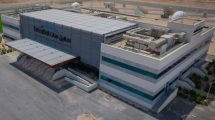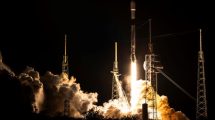
According to Euroconsult’s Government Space Programs 2019 report, just over half (12 out of 22) of the countries in MENA have government space programmes. In 2018, the region’s combined total expenditures were just under $1.3bn, led by the UAE ($383m), Qatar ($186m), Egypt ($177m) and Saudi Arabia ($165m). The region has demonstrated remarkable dynamism, posting a five-year cumulative annual growth rate (CAGR) of 11%, largely driven by strong growth-leading programmes but boosted also by new entrants such as Tunisia, Oman and Ethiopia, as they procure their first systems.
Regarding the top three regional powers, the UAE has sought to lead with a rapidly developing and ambitious space programme. With a heritage in Earth observation (both civil missions via DubaiSat and defence capabilities via the FalconEye programme) dating back to the late 2000s, in 2014 the country announced its Mars Hope mission, an unmanned orbiter which would measure the Red Planet’s atmosphere by 2021. This was followed up by the announcement in 2017 of a human settlement on Mars within 100 years.
These activities were reinforced by organisational restructuring, a revamped policy and legal framework, and an expanded budget to support these activities and new ones, including the country’s first astronaut mission to the ISS in Q4 this year. Despite the recent failure of the FalconEye1 launch, the country is likely to retain its regional leadership position as it expands its space programme and spearheads regional cooperation activities – for example, it created the Arab Space Coordination group of 11 Arab countries working together to develop the first pan-Arab EO satellite, 813.
Saudi Arabia has recently announced plans to significantly upgrade its space activities, spearheaded by the creation of a new space agency. Today, satellite communications and EO take up 85% (63% and 22% respectively) of Saudi Arabia’s total space budget. However, the country has announced an ambitious space programme and spending is likely to not only grow but also diversify, as it develops capacities in a number of different application areas, including satcoms, EO, technology development, launch vehicles (which could take the form of developing an indigenous launch capacity or developing a spaceport to attract commercial launchers), manned spaceflight and even space exploration missions by the end of next decade.
Qatar has traditionally focused on satellite communications via Es’hailsat, which took up over 90% of its space budget in 2018. With Es’hailsat buying full ownership in 2018 of Es’hailsat-1 – previously shared with Eutelsat – and the launch of Es’hailsat-2 in Q4 2018, as well as a possible third satellite expected to be procured in the coming years to satisfy future demand, the country’s space budget is forecast to continue its growth trajectory into the mid-2020s, boosted also by new defence spending for satcom and Earth observation ground assets.
While some countries still exhibit the cyclical boom and bust budget characteristics of countries which rely on foreign manufacturers to procure their space assets, a number of leading regional programmes have developed local space industries, transforming government space expenditure into long-term budgets required to support these industries.
Looking forward, the region’s growth dynamism will continue, albeit at a slower pace, with CAGR hovering at around 5% over the next decade. Regional budgets are estimated to reach $1.9bn by 2028. This strong growth is predicated upon Saudi Arabia’s forecast budget growth, but other events may also have a big impact on budgets – for example, regional instability may increase governments’ perceived need for defence space assets, successful regional cooperation initiatives may attract additional government funding, and regional rivalries may spur governments to unlock more funding as they compete with one another.












Add Comment